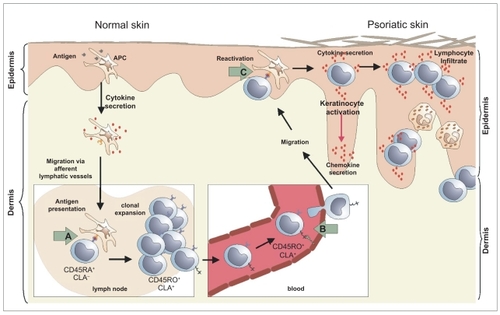Figures & data
Figure 1 Mode of action of efalizumab in psoriasis: According to a widely accepted working hypothesis, antigen-presenting dendritic cells of the epidermis transport yet unknown antigens to regional lymph nodes and present them to naïve T-cells. These respond by activation, proliferation, and maturation into effector T-cells, which patrol the body and leave circulation at the site of antigen contact. Subsequently, these cells migrate toward the epidermis and upon re-activation, release effector molecules, namely pro-inflammatory cytokines. Efalizumab interferes with this process at the LFA-1 dependent stages, namely activation of T-cells in lymph nodes (A), extravazation of circulating T-cells in inflammatory skin (B), and T-cell re-activation in the skin (C).

Table 1 Efficacy of efalizumab in the treatment of psoriasis (adapted from CitationBoehncke et al 2006b)
Table 2 Safety of efalizumab